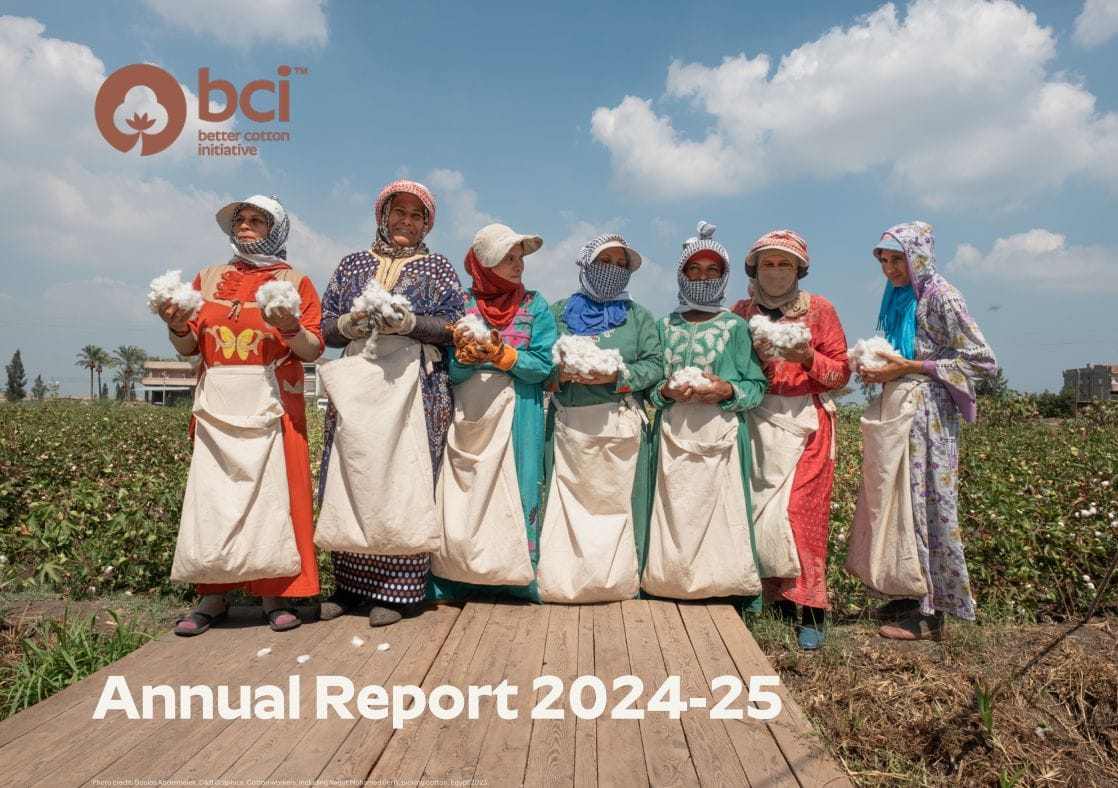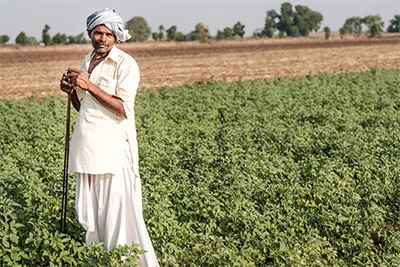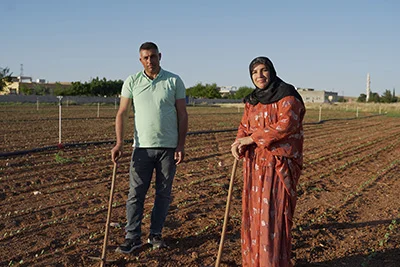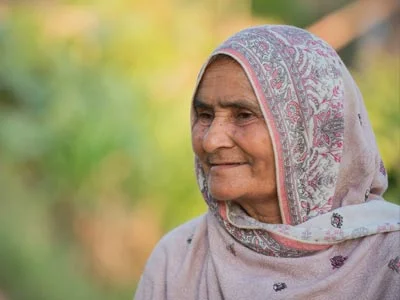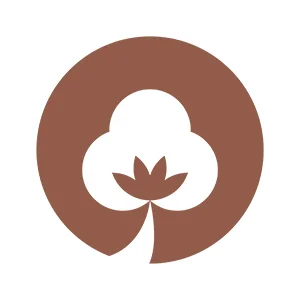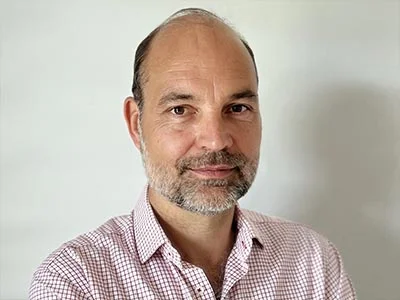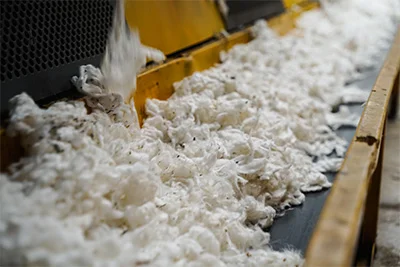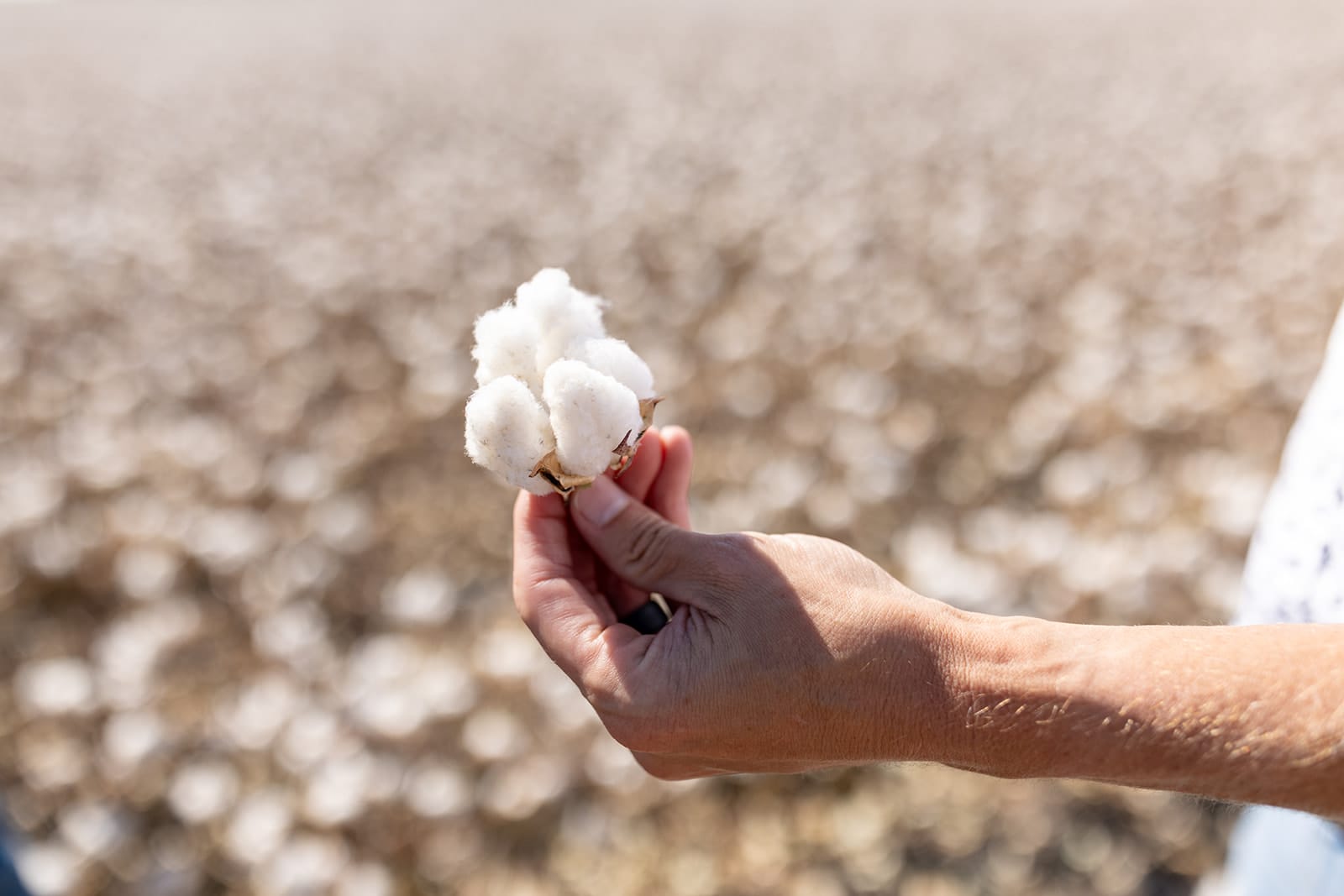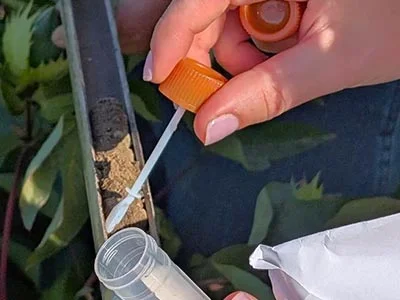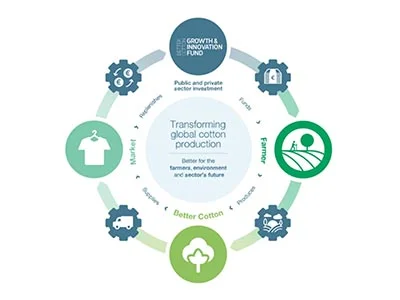31.07.13 Forum for the Future
www.forumforthefuture.org
By engaging with local farmers, major retailers and national governments, the Better Cotton Initiative aims to bring a third of the cotton market to a more sustainable footing by 2020, saysTim Smedley.
In 2010, the total production of sustainable cotton – certified as organic or Fairtrade – accounted for just 1.4% of the global cotton market (discounting those countries with federal oversight, such as the US and Australia). Over the next two years, this proportion grew to over 3%, more than half of it produced under the wing of the Better Cotton Initiative (BCI), and verified as Better Cotton. The founders of BCI did not set out to add another niche sustainability standard to the mix. Rather, their market-friendly approach is to encourage continuous improvement at a local level. By engaging major retailers as members, they hope to shape the mainstream.
Currently, BCI is aiming for more than 8 million tonnes of Better Cotton Lint produced by 2020, bringing a third of the cotton market to a more sustainable footing. Those backing Better Cotton, including the Sustainable Trade Initiative IDH and the non-governmental organisation Solidaridad, believe this will be the tipping point that sees more sustainable cotton become standard across the industry. Solidaridad advocates a more inclusive market: one which meets demand by recognising the full potential of smallholder farmers, and women in particular.
Of course, regulation also has a part to play in driving better practice. Kim Kitchings, Vice-President of the Corporate Strategic Planning and Program Metrics Department for Cotton Incorporated, points to the regulatory oversight of agriculture in countries such as the US and Australia, and the sustainable gains made by modern cotton production as a result. She explains that there may be a greater supply of relatively sustainable cotton than people realise:
”There are many definitions and criteria for what is sustainable. At the heart of them are three basic points: reducing the environmental impact; ensuring the system is both economical and profitable; and enhancing the quality of life of all workers. Cotton grown in developed markets like the US and Australia, which together represent approximately 20% of the global cotton supply, certainly meets these criteria.”
Nonetheless, increasing the supply of more sustainable cotton across the rest of the world – in line with BCI’s targets – requires an unprecedented expansion. And many challenges lie ahead.
So far, says Joost Oorthuizen, Executive Director of IDH, ”we have rightly been focusing on supply, on farmers. And we have done pretty well on that.” The farming practices promoted through Better Cotton have, on average, been found to help farmers increase yields and maintain cotton quality without increasing their financial inputs. Few farmers are going to turn that down. ”But now we have to shift our attention much more strongly to the demand side”, continues Oorthuizen. If brand procurement signals to major suppliers are saying strongly that sustainable cotton is the future, then this could be successful – but we have to be able to meet the demand, he argues. ”The flipside is that if we’re not able to do so, then you run the risk of momentum being lost”, he adds.
Lise Melvin, CEO at BCI, agrees: ”It’s ok to generate demand but if you aren’t able to satisfy it fast enough then retailers tend to get impatient.” However, there remain some issues on the supply side too. The strategy consultants Steward Redqueen stressed the challenges of ”balancing procurement and production at competitive market prices” in a report for IDH on the impact of BCI, published in February 2013.
Ultimately, those linking procurement and production will play a vital role, and must be convinced of the worth of more sustainable cotton if it is to reach scale. ”It’s not just about three or four different stages of garment factory, spinner, ginner, farmer”, explains Anita Chester, senior program manager for cotton at IDH, and former South Asia CEO of CottonConnect: ”It’s about multiple layers of traders, middle men, permission agents, across countries, across states. Everyone needs to work to make these connections.”
This has been the main focus of the Better Cotton Fast Track Program (BCFTP). Led by IDH and BCI, it brings together an elite group of BCI members – IKEA, Marks & Spencer, Levi Strauss & Co, H&M, adidas, WalMart, Olam, Nike and, most recently, Tesco. ”The front runners, if you like”, says Oorthuizen. ”They want to learn how to do this, and learn from each other. Clearly, a very active and proactive procurement strategy internally in those brands and in their long-term contracts with suppliers is key.”
The crucial role of the retailers is also recognised by Nico Roozen, Director of Solidaridad Network. The founding father of the Fairtrade movement in the 1980s, he now argues that a market-based approach is the only way to reach the mainstream: ”Around 10-15 years ago, we started with NGO projects helping farmers. After this, we tried to link these farmers to the market. But now we are working the other way around: we start with the supply chain, producers and brands … Real change can only be made when businesses integrate more sustainable cotton in their regular business and supply chain.”
A retailer that understands this well is John Lewis. It aims to use sustainable cotton wherever possible in its products. The John Lewis Foundation has developed a three-year cotton farmer training programme in India, with CottonConnect, to help reduce input costs and improve livelihoods for 1,500 farmers. John Lewis also participates in the Sustainable Clothing Action Plan (SCAP) led by WRAP, a multi-stakeholder group with the goal of improving the sustainability of clothing across its life cycle.
BCI retailer members work with local implementing partners that deliver training programmes in India, China, Pakistan, Mali and Mozambique that help reduce input cost and improve livelihoods for 165,000 farmers, by producing Better Cotton.
”This only works if brands really dig into their supply chain, map it and get to know their spinners better”, says Melvin. ”They need to have a strategy and local procurement teams, in-country if it’s a big retailer, who are briefed and trained.” Such an approach, she says, can drive wholesale change throughout the chain without lapsing into the temptation to spot-buy.
China, India and the US contributed 60% of the world’s cotton harvest in 2012.
The final piece in the jigsaw is convincing governments to incorporate sustainability into national standards. With cotton produced in more than 110 countries, it seems a Herculean task. However, 60% of the world’s harvested cotton in 2012 came from just three countries: China, India and the US. BCI recently revealed its expansion strategy for 2013-15, working with local implementing partners in China, India and Pakistan, and with national and global partners in Africa, Australia, Brazil, Turkey and the US to embed Better Cotton production locally through individual farm verifications. Through these collaborations, BCI aims to account for 75% of global cotton production.
”BCI is doing a great job helping farmers in developing countries achieve the same kinds of environmental gains already made by US growers at a national level”, explains Kater Hake of Cotton Incorporated, adding that the US is the world’s third largest producer and the largest exporter of cotton.
Suddenly, the target of a third of the global market by 2020 seems eminently achievable. Janet Reed, Director for sustainability, agricultural and environmental research at the US cotton association Cotton Incorporated, explains that because of federal, state and regional oversight, the US system is among the most transparent in the world. Additionally, buyers are able to track the credentials of a cotton bale via High Volume Instrument (HVI) data. ”For over 30 years, HVI data has provided a government-backed statement about the quality of each bale of US lint”, says Reed. ”The owner of any bale of US cotton can access HVI data on that bale from US websites, making it easy to trace the journey of the cotton from individual field to gin.”
Meanwhile in Turkey, the world’s eighth largest cotton producer, a multi-stakeholder workshop held by BCI in Istanbul in January saw participants support the development of Better Cotton in the country. They agreed an ambitious production target of 100,000 metric tonnes of Better Cotton lint by 2015.
For all this to happen, however, the future expansion of Better Cotton capacity, establishing mainstream recognition and ensuring financial resilience for BCI needs to be reached. Currently funded by a ratio of 1:1 public and private funding, the Steward Redqueen report warns that, ”The current market for Better Cotton, active for only three years, is not yet self-sustaining. This issue has been recognised by BCI and IDH who have established a new business model for Better Cotton. The new model includes BCI charging retailer and brand members a Volume Based Fee on their Better Cotton procurement. The fees will be invested in the production and delivery of Better Cotton. This investment by BCI’s Retailer and Brand Members is complementary to on-going investments by other stakeholders, and key to the success of mainstreaming Better Cotton and ensuring supply in the future. Ultimately, it will enable financial stability and economies-of-scale to be realised.”
And perhaps there is one final ally that will help Better Cotton become mainstream, the silent majority of the cotton trade: the consumer. ”There are some very interesting developments”, agrees Oorthuizen. ”Chinese young people and middle classes are very interested in sustainability, for example, perhaps more so than in the West. First, though, we need the systems: the Volume Based Fees and expanded capacity. Once all these things are in place, and the market picks it up, we’ll see how fast this can go.”
Better, how? The Better Cotton Initiative (BCI) works with a diverse range of stakeholders, including farmers, on a journey to promote measurable and continuous improvement. BCI aims to improve resilience for the environment, farming communities and the economies of cotton-producing areas, by following the six principles of Better Cotton:
Better Cotton farmers log their progress in field books, including agronomic and economic indicators. At the end of each season, BCI’s Implementing Partners compile and submit the data, alongside data from “control farmers’ (who are not part of BCI), and this is completed with independent quantitative case studies. Results can be affected – sometimes dramatically – by external factors, such as rain, pests and market prices, and so real impact can only be assessed over a longer period of time. Nonetheless, analysis of medium-term trends can be a useful indicator of change. |


Tim Smedley writes about sustainable business for titles including the Guardian and the Financial Times.
This article was published by Forum for the Future in their Green Futures magazine special: “The Cotton Conundrum’, available to purchase or download for free byclicking here.

